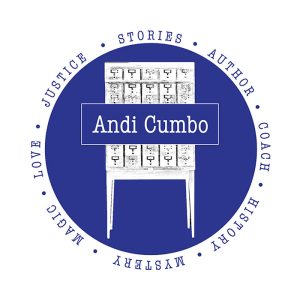Prefer to listen to this post? LISTEN HERE.
I hear some variation of this question on an almost daily basis. Many writers in my online courses, or writers with whom I’m working one-on-one, all repeatedly bump into the same obstacle: they don’t know how to find a point of entry into revising their own work.
“Where do I even begin?” they ask.
The question is deceptively simple, but the feelings that prompt it are complex. You’ve likely encountered one or both of these feelings as you’ve approached your own revision:
- the paralyzing fear that you’ll ruin what you’ve already written;
- the haunting possibility that you’re wasting your time because your original writing was never any good.
I get it. I’ve been there myself.
The other sentiment I always hear is this: “Once I get started, though, I’m fine.”
My goal, then, is to get you started.
But let’s not disregard the powerful feelings. They exist. They get in our way. Let’s push past them right now.
Fear #1: Will I ruin what I’ve already written by revising it?
You might. Revision doesn’t always improve writing. It’s not uncommon to make things worse. But writing is all about making choices, and revision gives you an opportunity to think hard about the choices you’re making: which words to use, how to structure your sentences, what stays and what goes. Even if you revise like crazy, and then revert to what you first wrote, your original sentence will be stronger because you’ve chosen it deliberately, using solid reasoning. If you’re afraid of ruining what you’ve written, preserve the original – you can always return to it if necessary.
Last month, Andi touched on this in Seeing Again: Strategies for the Hard Work of Revision.
Fear #2: What if my writing wasn’t any good to begin with – have I wasted my time?
Emphatically, no. Our writing is always lousy when we first begin. Even the most experienced writers generate junk when drafting something new. Nothing wrong with that. Like everything else, only application and practice can bring results, and that takes time. Time spent revising, therefore, is never wasted, because writing improves only when you work at it.
Thich Nhat Hahn, in Peace is Every Step: The Practice of Mindfulness in Everyday Life, offers good advice for how to cope when we encounter our fears:
It is best not to say, “Go away, Fear. I don’t like you. You are not me.” It is much more effective to say, “Hello, Fear. How are you today?”
Greet your fears, know you’re not alone, and get down to work.
Which brings us back to the original question of where to begin. Remember those writers who said once I get started I’m fine? You will be, too.
Here’s How to Begin
Andi made a suggestion about one way to get started in her post, Never a Perfect Day to Start Writing. Try what she suggests.
Here’s another way.
Learn Your Word Tics
The Learn Your Word Tics method for getting started is excerpted from the most popular lesson in an online course I teach called Improve Your Writing: 15 Essential Tools for Streamlining Your Sentences (the next session begins September 29, 2015). In this course we practice fifteen different ways to revise your sentences, and each one’s guaranteed to help you push past your fears and get down to work.*
You’ve probably had the experience of rereading a page of text you’ve written and discovering you used a particular word far too many times. We all have our word tics, and learning what they are in order to clean them up is a great way to get into revision.
 In one case for me that overused word was looked. I used it an embarrassing 339 times in a 370 page novel draft. Hand I used 440 times!
In one case for me that overused word was looked. I used it an embarrassing 339 times in a 370 page novel draft. Hand I used 440 times!
Here’s how you can learn your own word tics, and find your entry point into revision.
- Cut and paste your text into a free word cloud generator to produce your cloud. Larger words indicate more frequent use.
- Back in your word processed document, type these larger words one at a time into the “find” feature to see how often – and where – you use each word. If you don’t know the “find” feature, learn it now; it’s an important writing tool. Word tutorial. Mac pages tutorial.
- Word by word, work your way through your draft, scrutinizing how you’ve used that word; in each instance, decide whether to keep it, or change it.
Share your cloud with us in the comments section. (Need help? Find screen capture instructions here.) If you wish, tell us what you learned from studying your cloud.
See that? You got started on your revision!
 Joan Dempsey writes and teaches from “The Shed” in Maine. She holds an MFA in creative writing from Antioch University Los Angeles, and loves working with other writers. Check out her 2015-2016 online course and workshop offerings.
Joan Dempsey writes and teaches from “The Shed” in Maine. She holds an MFA in creative writing from Antioch University Los Angeles, and loves working with other writers. Check out her 2015-2016 online course and workshop offerings.
